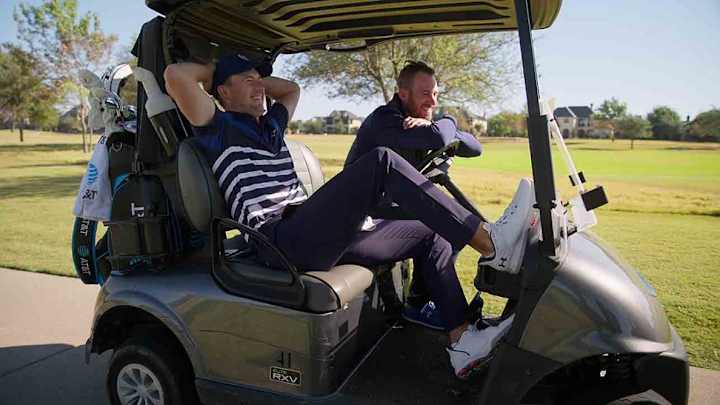Players Are More Comfortable With Netflix Producers Than Golf Writers, and More Lessons From Golf’s New Documentary Series

The Netflix documentary Full Swing debuted Wednesday as an eight-episode season. It’s worth binge-watching, but eight straight hours may be a lot to take on, so I’d encourage you to just wade into the first episode, which is called “Frenemies” and takes a focused look at the friendship between Jordan Spieth and Justin Thomas.
And then after a cool drink, you might think about the other seven episodes, which feature Scottie Scheffler, Brooks Koepka, Ian Poulter, Joel Dahmen, Matt Fitzpatrick, Dustin Johnson, Tony Finau, Collin Morikawa, Sahith Theegala, Mito Pereira and Rory McIlroy.
LIV Golf is covered throughout the eight episodes, but if you’ve been following golf closely over the past year, there is nothing about the alternative tour that would rock your world.

Full Swing is not a series that set out to break news, but it instead offers an in-depth and casual look at professional golf.
The series is a great introduction if pro golf is a passing fancy—maybe you stop and watch the majors and Ryder Cup, but the PGA Tour day-to-day grind is not generally your cup of tea. You might truly love this series.
For hardcore golf fanatics, Full Swing reveals some interesting tidbits about the players, but it doesn’t open the door to the innermost workings of the PGA Tour or its players’ thoughts.
Here’s a fun fact from “Frenemies”: The first year that Thomas played in Phoenix, Spieth pranked him by paying to have JT’s car taken out of the player lot and parked offsite. Thomas came out of the clubhouse to go to his car, and it wasn’t there. Thomas looked at Spieth, who didn’t crack, and only after two hours of searching for Thomas’s car did Spieth finally fess up.
So, what did we learn, beyond the fact that Spieth has an excellent poker face? Here are a few thoughts:
1. Players seem more willing to open up to Netflix producers than with golf writers who cover the Tour full time.
I chatted with Spieth about the first episode, and he mentioned that it felt different to be interviewed at home or in a comfortable setting, rather than immediately after five hours on the golf course while shooting a 65, 75 or something in between.
Point taken.
2. The focus of the eight episodes is not only on the players, but also on the majors.
And so it should be. The majors are the Holy Grail of golf, and each episode spends time on the preparation for and the focus on winning one of the four.
3. Access is the key to telling a good story.
It’s clear that all players interviewed bought into having Netflix as part of their life to a large extent, which provided insight that is hard to get in a normal reporter situation.
4. Where was Tiger Woods?
Woods was part of the Masters, PGA Championship and British Open in 2022 but was not really discussed or shown, which leads you to believe he was not interested in providing the access that Netflix deemed necessary.
Is Full Swing worth a look? Absolutely. It did a great job covering these multimillionaire pros and making them seem like normal people. But there is still a lot under the hood that you’ll still want to know, even as the last episode goes to credits.
